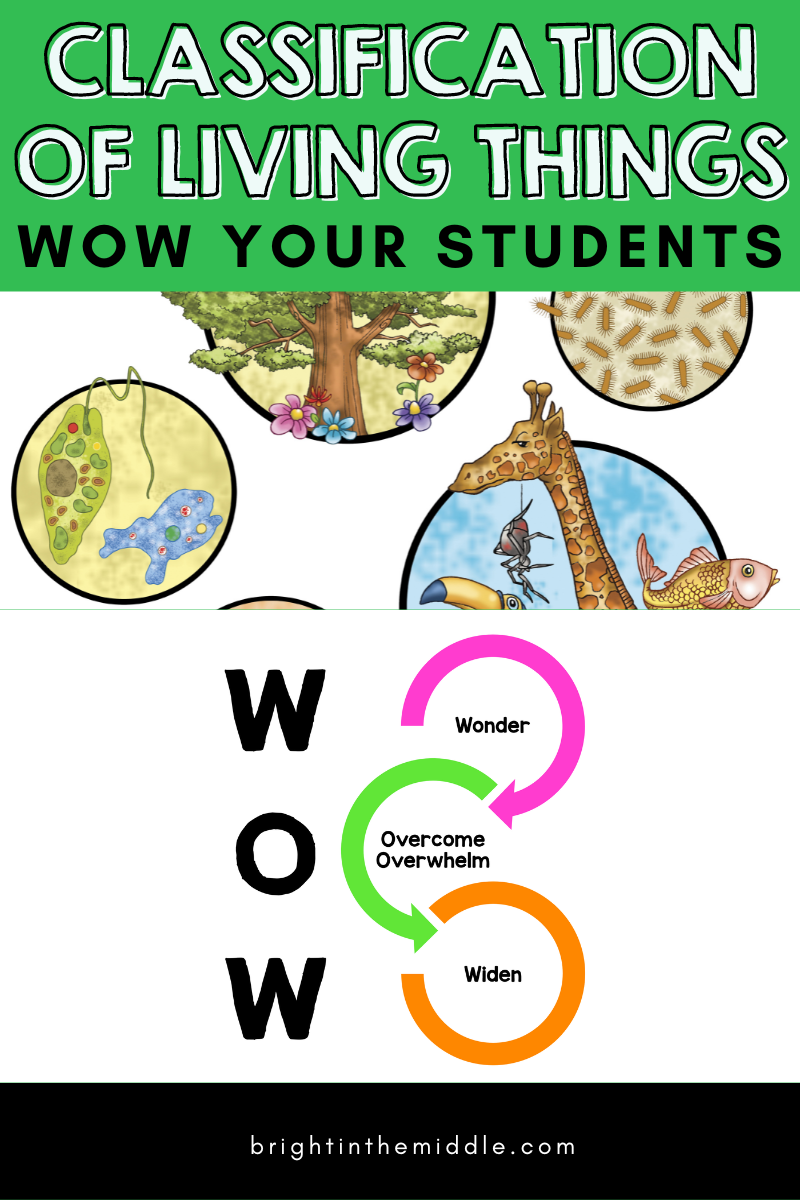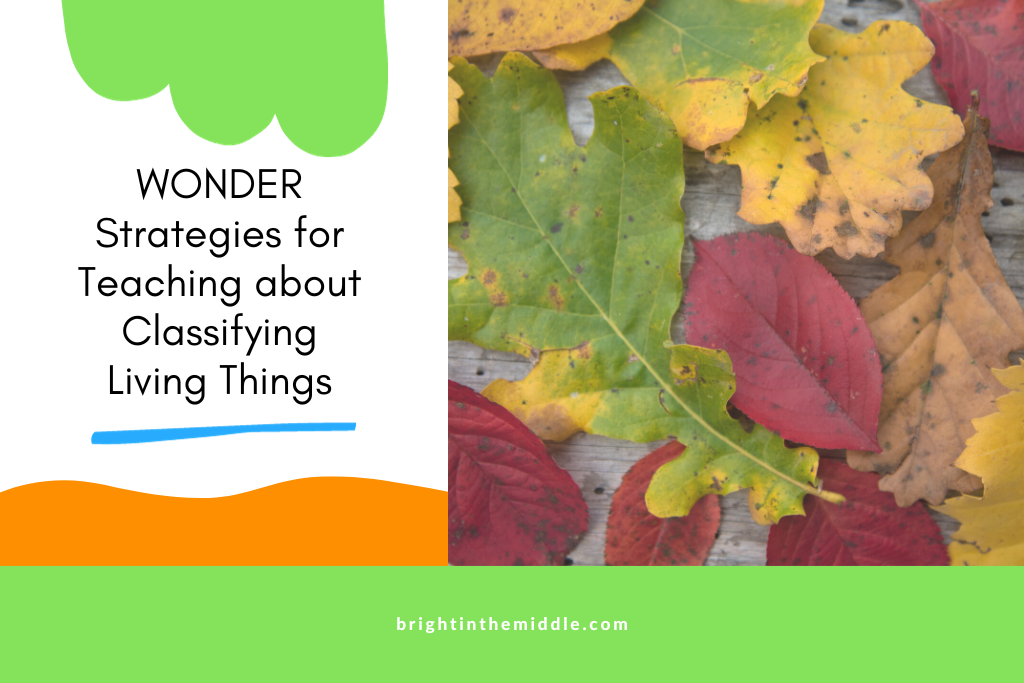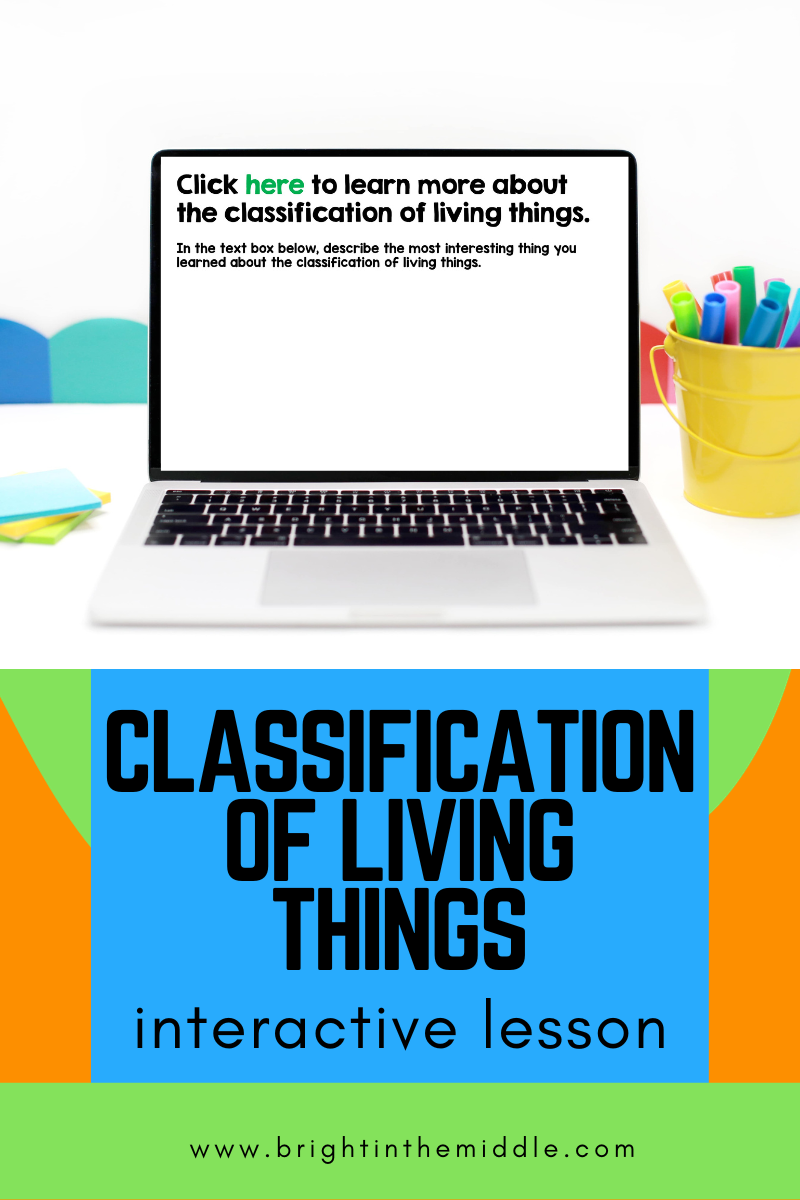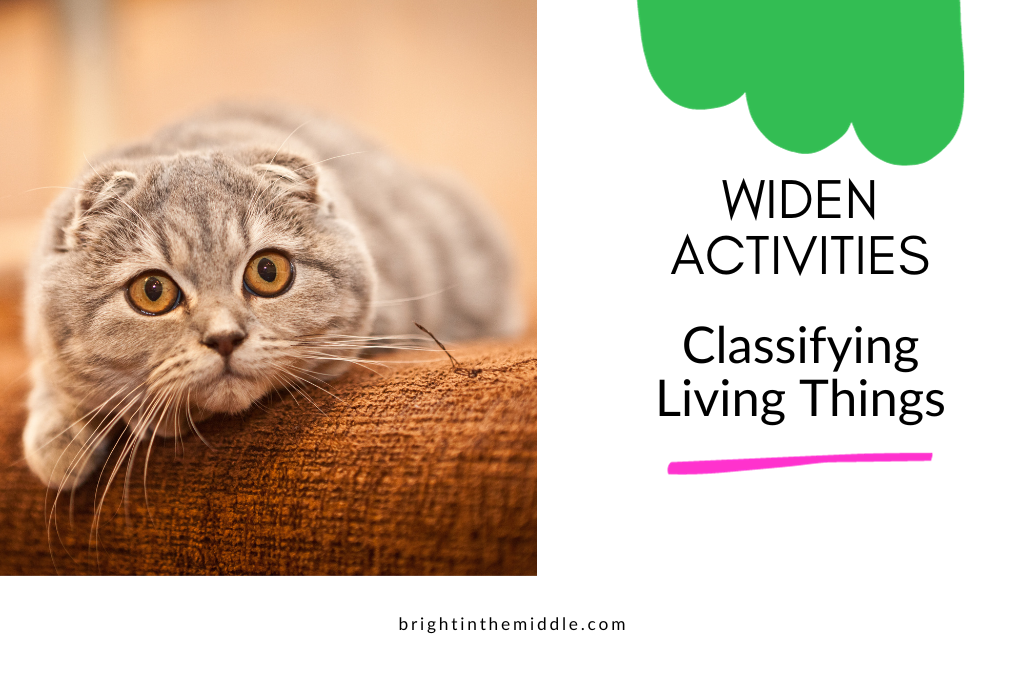Do you teach taxonomy classification of living things lessons? This can be a lot of fun, especially if you use the WOW Factor!
The classification of living things is just one of those foundational things that students learn in life science. Our Earth is made up of so many organisms with so much diversity. They must be organized in some way.
What’s cool is that the way that things are organized continues to change.
In this post, I share different ways that you can introduce the taxonomy of living things. Second, I share an interactive lesson that dives in a little deeper into the 8 levels of classifying living things. Finally, I share some WIDEN strategies to help your students expand their knowledge on this topic!
Let’s get started!

Introducing Taxonomy and Classification of Living Things
If you know me and have been following my ultimate list of WOW Factor ideas, you know that I believe in student buy-in and getting them excited about learning a topic. Whether you are introducing a phenomena, having a discussion, or doing an activity, WONDER strategies will help your students become internally motivated to learn. Here are three ideas that you can try! Choose one of more of these taxonomy classification of living things WONDER strategies!
Leaf Collection Phenomena
One of the best practices in science education is introducing phenomena to your students and referring back to it and adjusting ideas as students learn more about the topic. When learning about the classification of living things, you can introduce leaf diversity to your students and pose questions.
- Collect a variety of different leaves from different plant species. Make sure they look different in color, size, texture, etc. If you don’t have access to these leaves, you can print off pictures.
- Set them up on a table or create a display.
- Introduce these leaves to your students. Tell them to examine the leaves closely. Note any unique features. You can have them write down their observations on a piece of paper or in their notebook.
- Ask students questions such as: What do you notice about the leaves? Do you see any similarities or differences? Why do you think there are different shapes and sizes of leaves?
- As students think about these questions, have them to talk with a partner, and then discuss their answers as a class.
- Introduce the idea of classifying living things. Ask students how they would categorize these leaves.

SEEK App
Have you ever heard of the SEEK app by iNaturalist? It’s an app to identify and explore plants and animals in your area.
Users can point their smartphone or tablet camera at the organism and take a photo. The app attempts to identify the species, and it does a great job.
It also brings up organisms that may be around the area.
In addition, there are challenges to explore. There really is a lot to this app.
- Make sure that students have access to this app, whether it be on their own phone or if the school has tablets you can use.
- Take students outside and let them take pictures of some organisms.
- Once student come back inside, have them to look at each of the species and see what they notice. They’ll see a blurb, a range map, the taxonomy, iNaturalist observations, seasonality, and similar species. They may notice some other things as well!
- Discuss as a class!
Alien Organism Classification
Here’s another activity to get your students excited about the classification of living things. Before learning about that “real-life stuff”. Give them a chance to think about classification in a different way.
- The day before, tell students to create a drawing of an alien. Don’t give them any parameters. It can be whatever they think an alien looks like. Have them to color it too!
- You should have a set of 20-30ish cards, depending on how many students are in your class. If you have multiple classes, you can choose for just one of your classes to do this to save time.
- Make copies and create sets of the “alien cards”.
- Put students into groups and give each group a set of alien cards.
- Tell students to organize them!
After students finish, relate this to how scientists had to do the same thing (organize organisms), but it was on a MUCH larger scale.
You can also print some alien clipart to save time as well!
Students will create their own classification of living things chart (well aliens).
Classification of Living Things Interactive Lesson
I love interactive lessons. They are a great way to dive deeper into a topic and explore phenomena in the beginning stages. Interactive lessons are designed to help students learn the content using the 7steps to help students retain information and reduce overwhelm by reducing cognitive load.
Inside the lesson, there is middle school level content with embedded activities that students can work through to help them process the content. They are a lot of fun, and students love them (and teachers too!).

In this Classification of Living Things Interactive Lesson, students learn about the characteristics of living things, taxonomy, the 8 levels of classifying organisms: domain, kingdom, phylum, class, order, family, genus, species, and an example of classifying a lion. There is so much more included as well.
Inside of the content, there are embedded questions and activities including a KWL, drag-and-drop activities, exploring resources online, creating a classification of living things mnemonic, and much more!
You can find this resource in the Bright in the Middle Shop.
You can also find this on TPT!
Taxonomy Classification of Living Things WIDEN Activities
WIDENing student knowledge is important to go above and beyond state standards as well as just continuing to explore phenomena and adjust ideas as needed. Here are three ideas that you can try with your students. You can choose do one, two, or all three!
Skip the worksheet on classification of living things and try these!
Classification and Organism of Their Choice
Inside of the interactive lesson, there is an opportunity for students to pick an organism of their choice and classify it.
You can take it a step further.
Students can choose the same organism, or choose another one. Maybe they can choose their favorite celebrity’s favorite animal! Supposedly Taylor Swift’s favorite animal is cats!
- Once students have chosen a favorite animal, they can look up its taxonomy.
- From there, students can create a poster (can just be computer-sized paper) that represents the 8 levels of classification of that organism.
- Have students present to the class or you can display these pieces of scientific artwork in your classroom!

Learn about Dichotomous Keys
Maybe you want to explore dichotomous keys?
You can show your students this Amoeba Sisters video of Dichotomous Keys.
Here’s a fun lesson to explore by the National Park Service.
Classification of Mystery Organism
If you are looking for a lab activity to go with this lesson, here’s a good one. Students will classify “mystery” organisms into taxonomic group based on their share characteristics.
Do a classification of living things quick check and begin!
You will need: different organisms like insects, leaves, shells, etc. (or probably just pictures of them), microscopes, and hand lens. The organisms should have distinct characteristics.
- Provide students with a set of mystery organisms.
- Tell students to carefully observe each mystery organism and record their observations. Tell them to provide details such as shape, number of legs, patterns, color, or and other unique characteristics.
- After collecting observations and data, ask students to classify them. They can work in their groups to decide on classification criteria. They should use the 8 levels of classification system.
- After they believe they have the correct categories, discuss it as a class. You can also have students present their findings.
Which classification of living things assignment is right for your classroom?
Looking for a particular kingdom lesson, like fungi?
Help your students master science content!



[…] Classification of Living Things […]